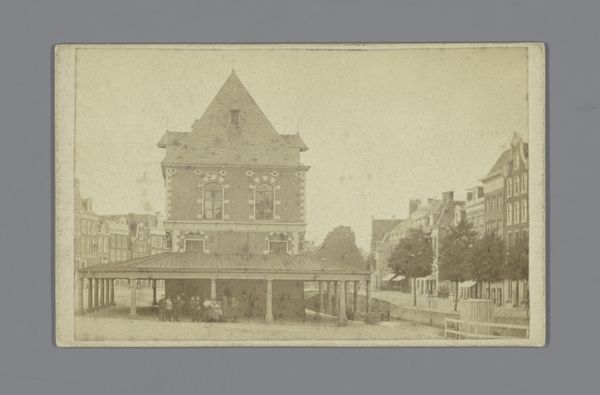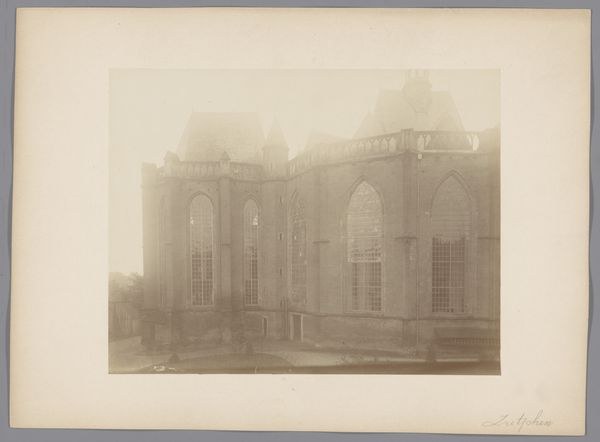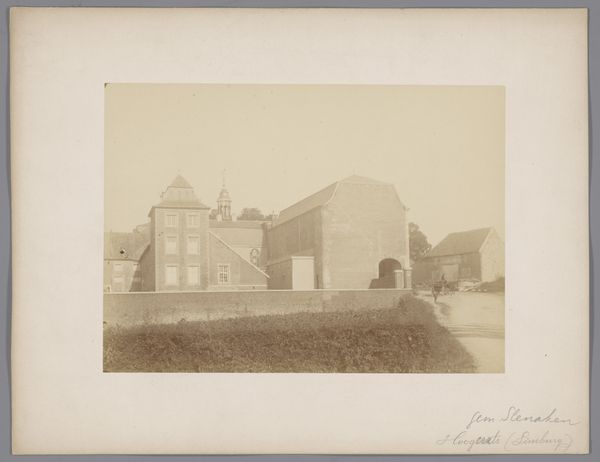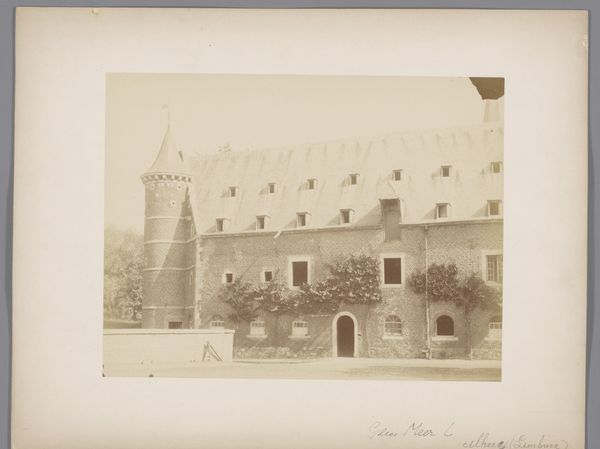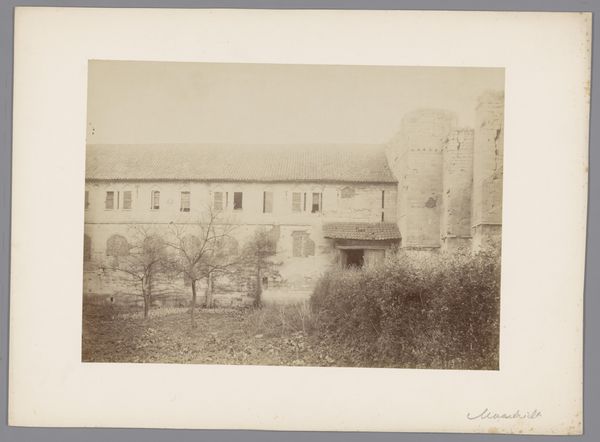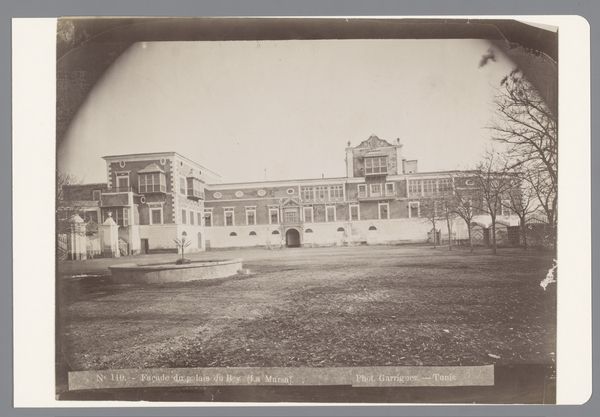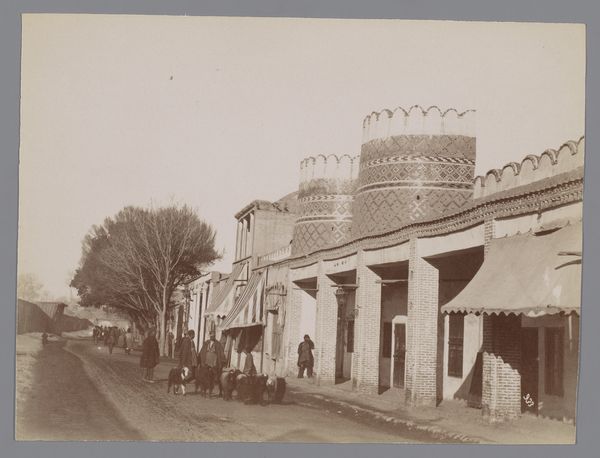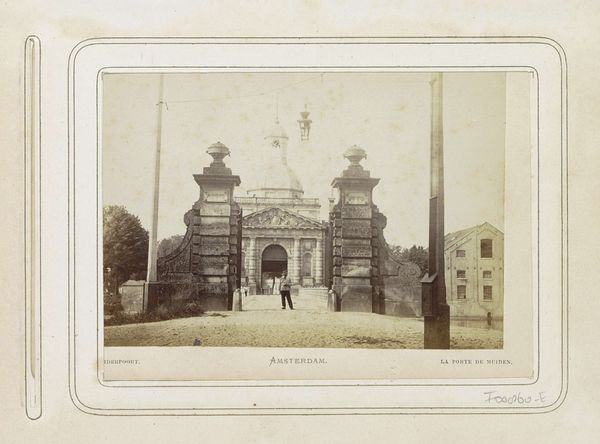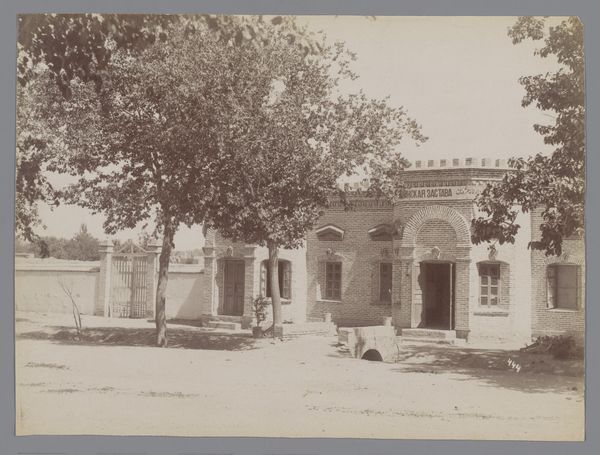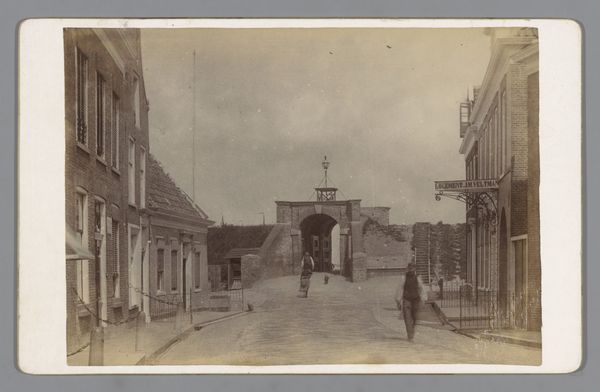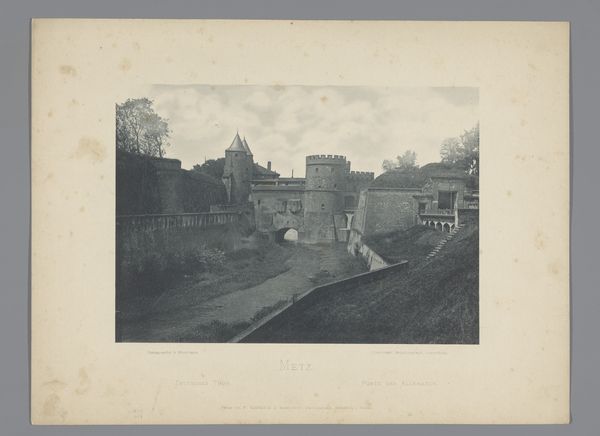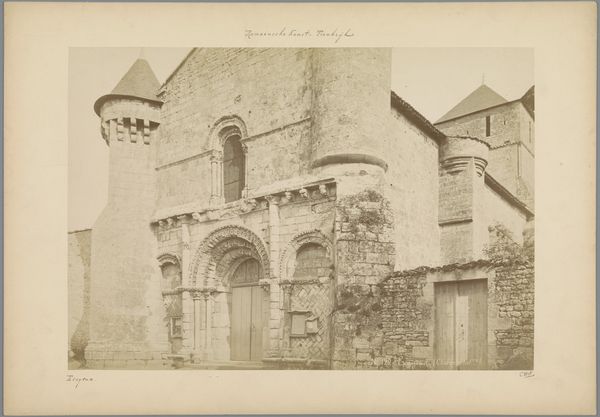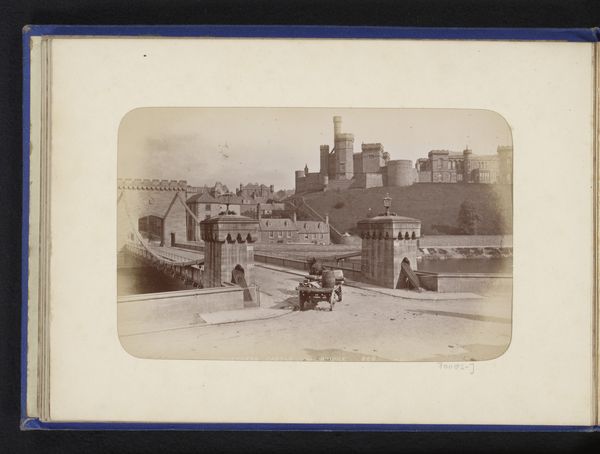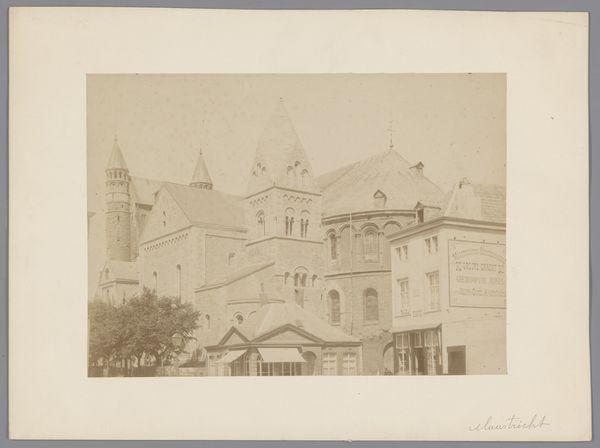
Exterieur van de Cellulaire Strafgevangenis te Groningen c. 1880 - 1900
0:00
0:00
#
aged paper
#
homemade paper
#
paper non-digital material
#
pale palette
#
reduced colour palette
#
muted colour palette
#
photo restoration
#
personal sketchbook
#
historical fashion
#
paper medium
#
building
Dimensions: height 96 mm, width 142 mm
Copyright: Rijks Museum: Open Domain
Editor: This is "Exterieur van de Cellulaire Strafgevangenis te Groningen," a photograph taken by Johannes Gerardus Kramer sometime between 1880 and 1900. It depicts the exterior of a prison. The tones are quite muted, almost sepia-like. What do you see in this piece? Curator: I see a photograph not merely documenting a building, but a process. Look at the paper itself – likely homemade, aged, and carrying its own history. The very materiality of this print speaks volumes about 19th-century production and consumption of imagery. Consider how this object would have circulated, for whom, and what purpose? Is this about civic pride, architectural documentation, or something else entirely? Editor: That’s a perspective I hadn’t considered. I was focused on the image itself. Curator: The image is *part* of the material culture. The muted tones, the composition - they were all dictated by the available technology, chemical processes and economic realities. How does that relate to this building itself? Prisons are a potent symbol of power, labor, and control. Consider who profited from its construction, who maintained it, and who was confined within. Editor: So you’re saying the photograph itself becomes an object that embodies the socio-economic conditions of its creation, reflecting the prison's own place in that society? Curator: Exactly. The material, the means of production, and the social context are intertwined, aren't they? What does understanding all this add to how you understand the photograph? Editor: I guess it shifts the focus. I initially saw a historical image; now, I see a physical record of a particular time and its values. Curator: Precisely. And that awareness changes our relationship to both the artwork and the historical moment it represents. Editor: That makes perfect sense. Thanks, I'll keep that in mind going forward.
Comments
No comments
Be the first to comment and join the conversation on the ultimate creative platform.
